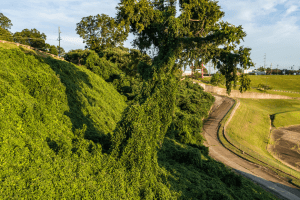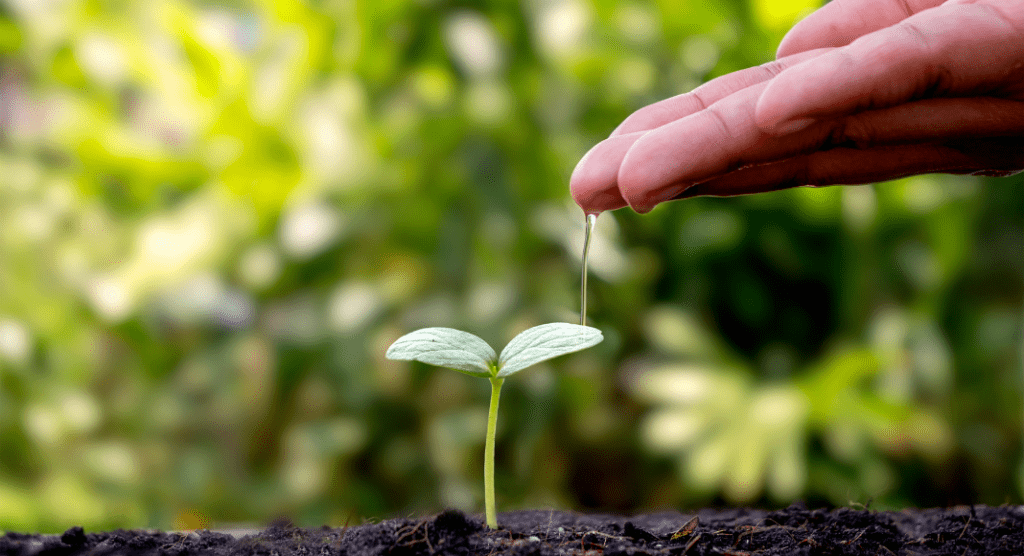
Stressful Environments
Let’s be real. In their lifelong journey through parenthood, many caregivers feel touched out, cramped, and generally overstimulated every now and then in the presence of their (ever-so lovable) littles. When too much is too much, the physical and emotional congestion make it hard to flourish in the moment. So how do we overcome? Some of us breathe and ground ourselves, some leave the room for a moment to muster strength and serenity, and others who have help nearby reach out for it.
But what would you do if you ran out of options? Talk about stressful!
This is kind of what our ecosystems experience when choked out by invasive species. Invasive species spread and consume resources too fast for other plants and animals to compete. Out of options, overrun, unable to care for inhabitants at full capacity—this is ecosystem stress.
Invasive Species and Our Touched-Out Mother Earth
I like to think of my experience within humanity as a microcosmic mirror of the greater universe. What I experience often reflects the experiences of other people, animals, plants, and entire ecosystems. When any one of us experiences excessive stress without the ability to mitigate it, we malfunction, wither, or break down. The same can be said for the natural environment in which we live. When an otherwise thriving ecosystem experiences stress, it falls apart. Sure, this will look different in nature than it does in a playroom, but the concept is the same–collapse.
Side note: In this article, I’ve included the scientific names alongside common names to prevent mislabeling. Some very different plants have overlapping common names. Using scientific names here and elsewhere helps everyone to stay specific and avoid confusion.
Well-Intended Space Invaders
When invasive species, or species of plants/animals that are not a part of the natural ecosystem, enter a landscape, they can create great stress on an ecosystem. This stress comes as a detriment to the plants and animals that once thrived in the same place. Invasive species typically invade by way of human intervention. This intervention is either unintentional, such as through trade and travel, or intentional, as with planting in a garden, or as we know in the south, well-meaning efforts to manage the environment.

Kudzu, or Pueraria montana, spread so quickly because people planted it, deliberately and copiously, to reduce soil erosion. Kudzu did a great job of keeping soil intact—at the expense of forests all around us! When kudzu succeeds, it SUCCEEDS, choking out swaths of native plants along with the food these natives provide for local wildlife.
Kudzu may be the most obvious of our local invasive species, but it is not the only one! Most of us can find invasive species surrounding our homes, thriving right under our noses as they silently compete with native plants and animals for limited space and resources. I’m looking at you, privet (Ligustrum sinense), nandina (Nandina domestica), and Bradford pear (Pyrus calleryana)!
Backyard Stress Reduction: How Can We Help?
Want to take the pressure off the natural ecosystem? There are ways you can help!
Step 1: Know your plants, both native and invasive.
The first step is to learn how to identify both invasive and native species around your home. There are plenty of plant identification apps (also useful to name those cool flowers you find on springtime family hikes) and facebook groups to assist, but the help of professionals cannot be understated! Check in with your local extension service to see what sorts of education opportunities and resources they offer. These resources are often free and may be underutilized by the community. Jefferson County’s extension office contains a team of seasoned professionals and Master Gardener volunteers who can help untangle even the messiest of garden problems.
Step 2: Get to know your options.
Once you’ve brushed up on plant ID and understand what should and should not be in your yard, prioritize! Ask questions like the following:
- How fast will this spread? Some invasives spread faster than others and may be a higher priority for removal.
- What will it take to remove this from my property? If the plant is a tree versus a small shrub, specialized equipment and/or professionals may be required. Other plants, like privet, grow vast root systems and are difficult to get rid of without extensive digging, chemical management, or both. Complicated cases like these may require help from the pros!
- Can I manage it to prevent it from spreading without removing the plant? Nandina, AKA heavenly bamboo, has been integrated into landscape designs for decades, despite its rampant spread and known invasive species status. What if you want to keep your beautiful nandina in its place? You can mitigate its spread by removing the flowers and berries before birds eat them and spread their seeds throughout the area.

- What can I plant in its place? If you leave a glaring hole in your landscaping, consider replacing the invasive plant with a native species. Alabama has plenty of gorgeous plants! Wildflowers like echinacea (Echinacea purpurea) and coreopsis (Coreopsis verticillata) are some of my favorites, but check out our local evergreens like yaupon (Ilex vomitoria) and Southern magnolia (Magnolia grandiflora), too! You could even create a small family garden plot to keep the kids entertained over the summer.
Step 3: Take action and watch how nature responds.
Reduce stress on the native plants and animals, and your ecosystem may breathe better, feel less overstimulated, and find more space to nurture the creatures and sprouts that rely on her for survival. Sound familiar?
We can all do our small part to help another mama out—Mama Earth!












